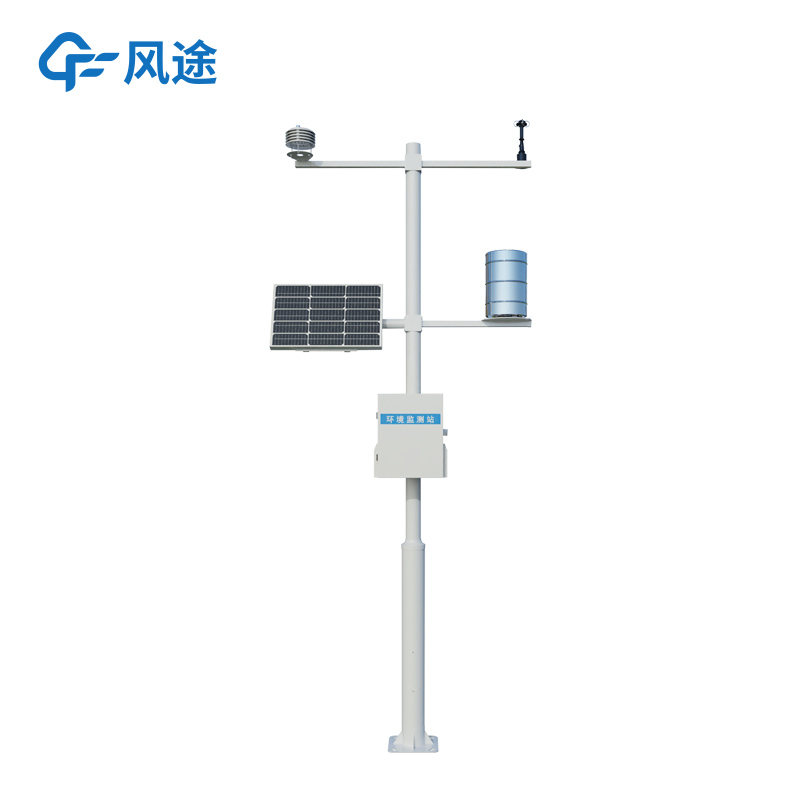A Meteorological Observation Station is composed of sensors for temperature, humidity, wind direction, wind speed, rainfall, air pressure, etc., along with cameras, solar panels, a computing gateway, and a protective box. The equipment can collect multi-dimensional meteorological data and upload it to the property management platform in real time, allowing users to view the data at any time via terminals such as computers and mobile phones. It supports custom early warning thresholds; when the monitored data exceeds the set range, the system will automatically push early warning information to remind users to take response measures. Moreover, it can operate stably in scenarios such as cities, villages, mountainous areas, and oceans, continuously providing accurate meteorological data and services.
The product structure design is adapted to diverse needs: For basic fixation, cement foundations or expansion bolts can be selected according to the installation scenario; the power supply adopts a dual-mode of municipal electricity and solar energy, which automatically switches to solar power supply after a power outage to meet the usage needs in field environments without municipal electricity; the intelligent protective box is made of corrosion-resistant and durable materials, capable of resisting external influences such as wind, rain, sun exposure, and corrosion, and integrates core components such as a gateway, a solar power management module, and an energy storage battery inside; the sensors support free combination of soil and meteorological equipment; communication methods include wired modes such as RS485 and Ethernet (suitable for fixed installation scenarios), as well as wireless modes such as 4G, 5G, and LoRa (suitable for mobile or remote areas).
In terms of functions, it has advantages in multiple aspects: The gateway can process the collected data in real time locally, quickly generating results such as temperature change trends, average wind speeds, and extreme values; early warning thresholds are set based on local data, and alarms are triggered immediately when data exceeds the limit to notify relevant personnel in a timely manner; the gateway can convert data from devices with different protocols into a unified MQTT format to ensure smooth transmission and integration; when the network is interrupted, it can temporarily store data and automatically resume transmission after the network is restored to avoid data loss; managers can remotely monitor the working status of sensors, data collection frequency, equipment energy consumption, etc., troubleshoot abnormalities in a timely manner and perform remote maintenance; they can also remotely adjust the sensor sampling frequency and data transmission cycle according to needs to achieve equipment linkage, such as automatically activating ventilation and cooling equipment when the temperature is too high, and automatically shutting down outdoor equipment when rainfall is excessive; the dual power supply, protective box, and industrial-grade gateway enhance anti-interference and protection capabilities, enabling it to cope with environments such as high temperature, low temperature, humidity, and dust; the gateway adopts low-power chips and design, which can extend the battery life of field solar-powered equipment and reduce energy consumption and maintenance costs.

Article address:https://www.sqqx.net/en/news/728.html

 +86 15898932201
+86 15898932201



